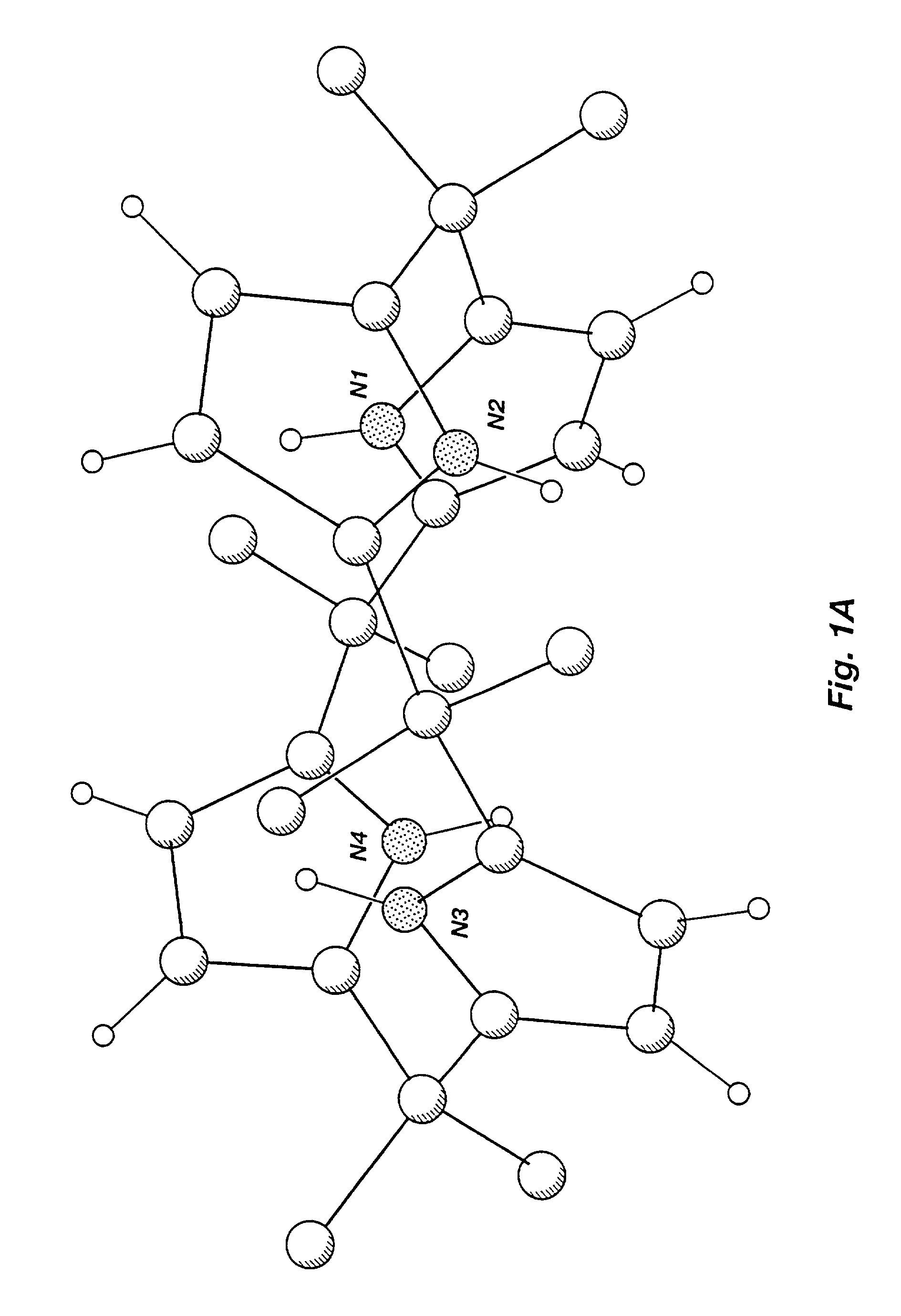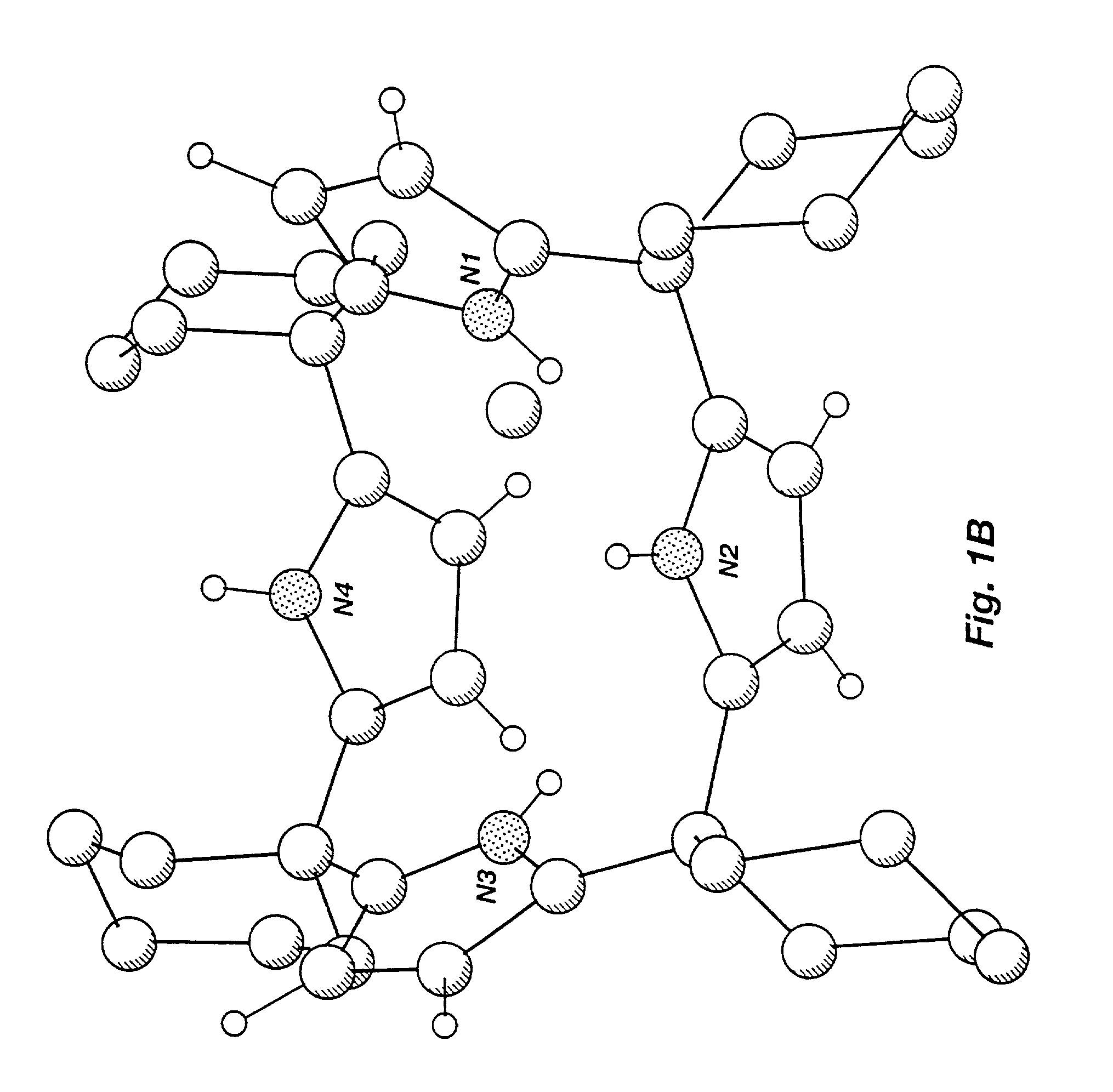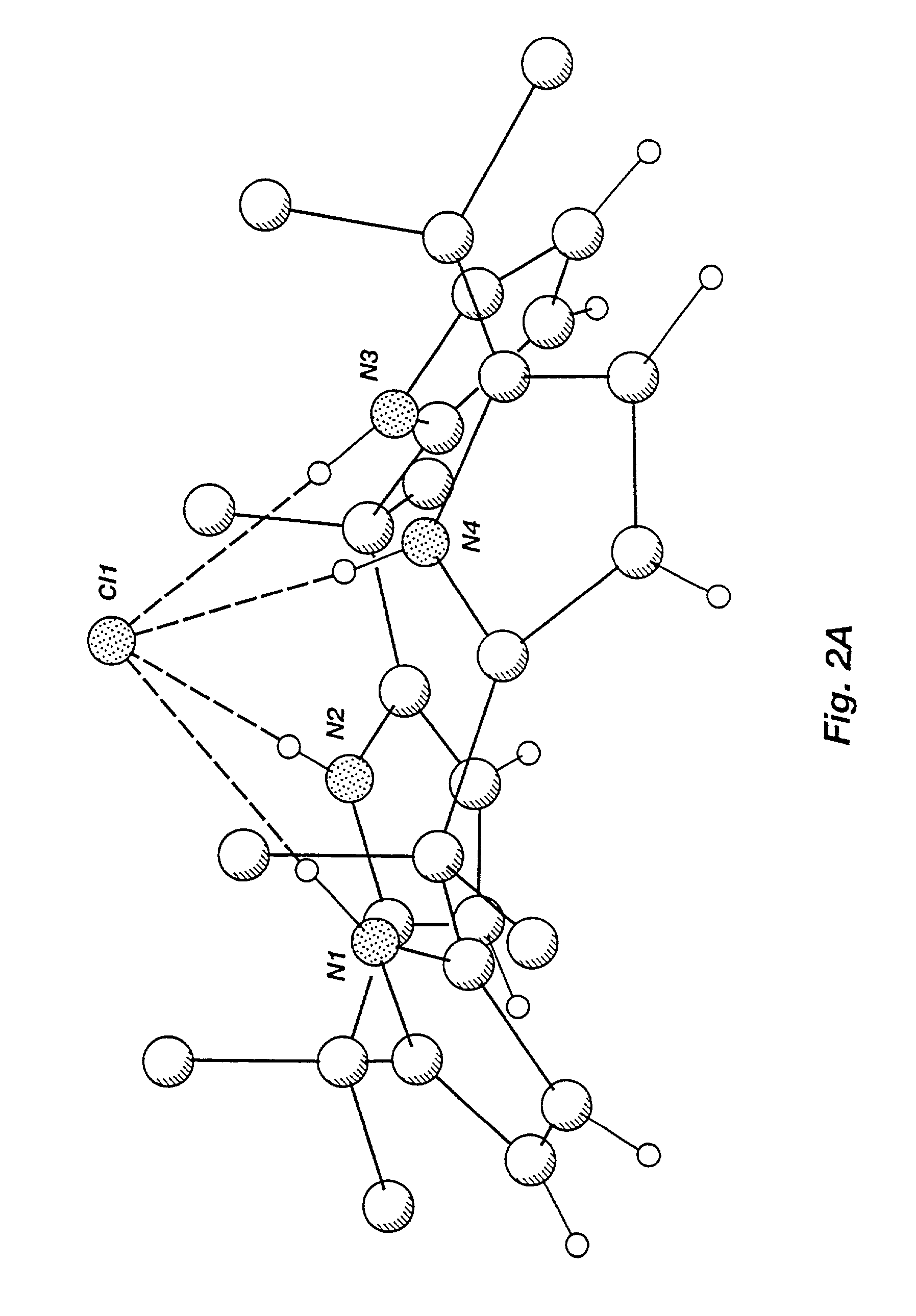Halogenated calixpyrroles and uses thereof
a technology of halogenated calixpyrrole and pyrrole, which is applied in the field of separation technology, environmental remediation, biomedical applications, can solve the problems of reduced yield, cumbersome methodology, and inability to obtain purity easily using existing technology, and achieves enhanced binding properties and preferential binding
- Summary
- Abstract
- Description
- Claims
- Application Information
AI Technical Summary
Benefits of technology
Problems solved by technology
Method used
Image
Examples
example 1
Novel Crystal Structures of Complexed Prior-Art meso-Substituted Calixpyrrole Macrocycles
[0265]The present inventors have crystallized anion- and neutral molecule-complexed forms of known calix[4]pyrrole macrocycles and have studied the coordination properties of calixpyrroles in solution and in the solid state. As a result, the present inventors have demonstrated unexpected crystalline forms of calixpyrrole macrocycles and the existence of a conformational change between an unbound macrocycle and a macrocycle bound to an anion or a neutral substrate. In the solid state, uncomplexed calix[4]pyrrole macrocycles adopt an alternate conformation where adjacent pyrrole rings are oriented in opposite directions. Solid-state complexed calix[4]pyrrole macrocycles are shown herein to adopt a cone conformation such that the four NH protons of the pyrrole rings hydrogen bond to the bound substrate forming a supramolecular ensemble. In solution, a dynamic equilibrium exists where the bound anio...
example 2
Novel meso-Substituted Calix[4]pyrrole Macrocycles
[0279]The present example provides meso-substituted calix[4]pyrrole macrocycles that have not previously been known. In particular, calix[4]pyrrole macrocycles having functional groups for further derivatization have proved particularly useful as provided for in later examples.
[0280]Calix[4]pyrrole meso-monoester 3. 4-Acetylbutyric acid (3.8 g, 29 mmol) was dissolved in methanol (50 mL) in a 100 mL round bottomed flask with magnetic stirring. Concentrated hydrochloric acid (1 mL, 37%) was added and the mixture heated at reflux for 12 hr. The solvent was then removed in vacuo and the residue redissolved in dichloromethane (50 mL). The solution was then washed with saturated NaHCO3 (aq) solution (2×50 mL) and then brine (1×100 mL). The organic layer was separated and then dried over MgSO4 and reduced in vacuo to give the methyl ester, methyl-4-acetylbutyrate, as a yellow oil (3.5 g, 24.3 mmol) corresponding to a yield of 84%. 1H NMR (C...
example 3
Novel β-Substituted Calix[4]pyrrole Macrocycles
[0304]Calix[4]pyrrole macrocycles with functional groups in the β-position (i.e., on the β-carbon of a pyrrole ring), and the syntheses thereof, are provided in the present example. Such β-substituted calixpyrroles may have substitution at one or more of the β-positions. To prepare such compounds of the present invention, either meso-octamethylcalix[4]pyrrole 1 is deprotonated and the substituent to be added at the β-position is then reacted with the activated calixpyrrole, or the calixpyrrole is synthesized from a β-substituted pyrrole.
[0305]Initially, sodium hydride was tried as a base to deprotonate the calixpyrrole. Sodium hydride was added to a solution of the macrocycle in DMF, after which bromoethylacetate was added in order to introduce an ester functionality to the calixpyrrole. However, this produced no reaction.
[0306]A stronger base (n-BuLi) was then tried; 4 equivalents of the base were added dropwise to a THF solution of th...
PUM
| Property | Measurement | Unit |
|---|---|---|
| Capacitance | aaaaa | aaaaa |
| Temperature | aaaaa | aaaaa |
| Molar density | aaaaa | aaaaa |
Abstract
Description
Claims
Application Information
 Login to View More
Login to View More - R&D
- Intellectual Property
- Life Sciences
- Materials
- Tech Scout
- Unparalleled Data Quality
- Higher Quality Content
- 60% Fewer Hallucinations
Browse by: Latest US Patents, China's latest patents, Technical Efficacy Thesaurus, Application Domain, Technology Topic, Popular Technical Reports.
© 2025 PatSnap. All rights reserved.Legal|Privacy policy|Modern Slavery Act Transparency Statement|Sitemap|About US| Contact US: help@patsnap.com



